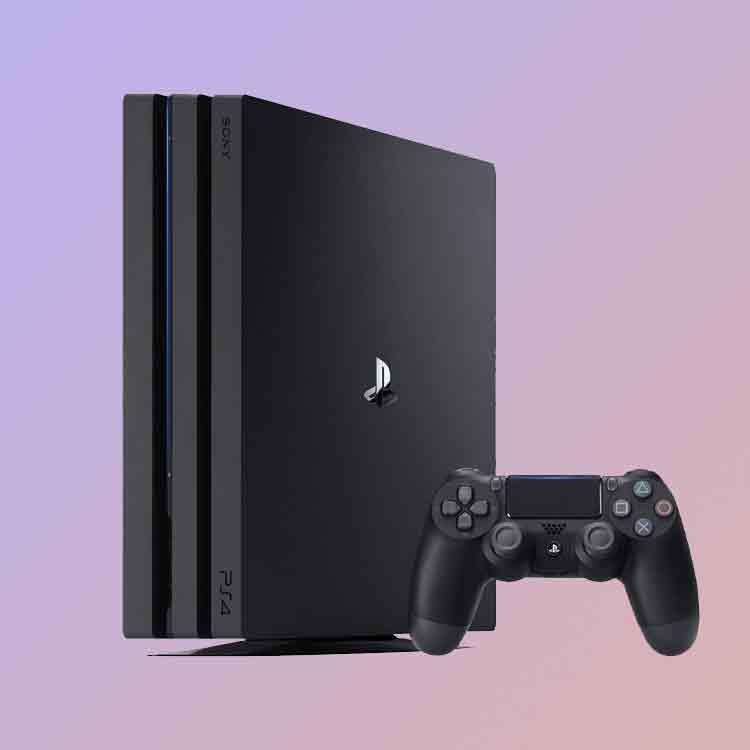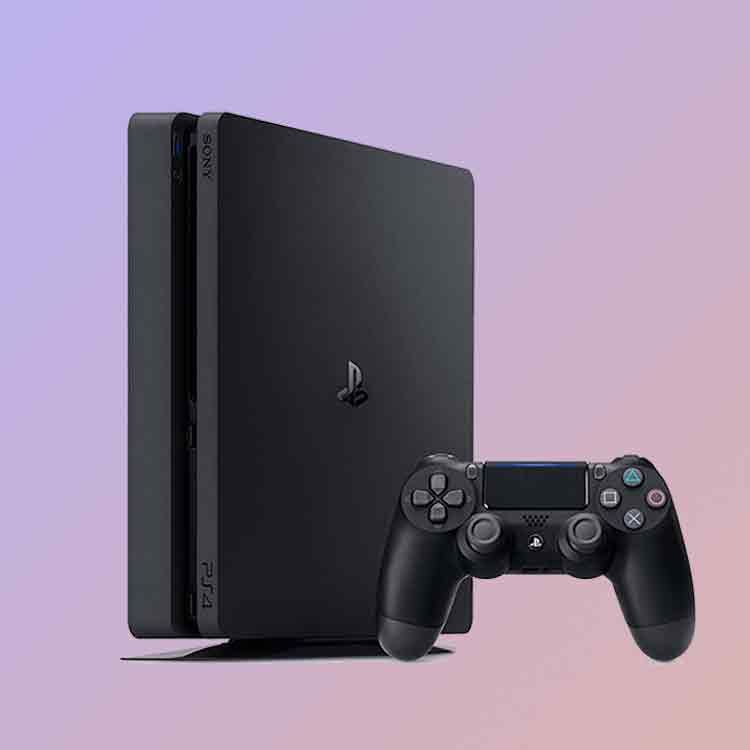-

PlayStation 4 Pro
Sony's last-generation power-house gets a lot closer to the likes of the PS5, but it's quite chunky and a bit of a halfway house. Still, for raw power it's the obvious winner.
- Storage
- 1TB HDD
- Resolution
- Up to 4K
- HDR Support
- Yes
- Weight
- 3.3kg
-

PlayStation 4
The slimmed-down PS4 is much smaller than the PS4 Pro and has less graphical beef behind it, but it can play all the same games and you can probably find it for a lower price.
- Storage
- 500GB or 1TB
- Resolution
- Up to 1080p
- HDR Support
- Yes
- Weight
- 2.1kg
The PlayStation 5 may have started a new generation of consoles for Sony, but if you're looking to step back a bit and catch up on the best that its last generation has to offer, a PS4 might still make plenty of sense.
Both the PS4 and PS4 Pro are still great options that tick all the boxes. If you're able to make the most of the used market, they're both reasonably priced for what they offer and support a games library that is now thousands of titles deep.
If you're wondering which of the two main versions is right for you, here are all the key specs and comparisons to help you make your decision.
4K HDR gaming
While the PS5 has made it standard, we shouldn't forget that the whole reason the PS4 Pro came in was ostensibly to usher in 4K gaming for the masses.
It can theoretically run games at 4K (3840 x 2160), something that the PS4 Slim can't manage at all. It tops out at 1080p.
However, it's well worth knowing that while the PS4 Pro can indeed manage that output, in most games you're likely to play it won't be up there - performance varies massively and most games use a technique called checkerboarding to simulate the rough look of 4K without all of its true sharpness.
So, while you do definitely get a resolution bump over the standard PS4, you can't expect to be playing in true native 4K at all times.
When it comes to HDR it's a different story. Both PlayStation 4 consoles have the capability of HDR presentation - adding a wider colour gamut, brighter images and better contrast to supported games when connected to a compatible TV.
4K HDR video
If you're looking to use your console as a home entertainment system, the results are surprisingly similar - the main difference comes down to resolution.
Being a 4K console, the PS4 Pro is indeed capable of streaming Ultra HD video while the PlayStation 4 is locked to a maximum of 1080p.
Where HDR video is available, both consoles can output it, although this varies from app to app and service to service.
Another strange anomaly is that, although it is technically possible for the PS4 Pro's HDMI output to work with 4K Ultra HD Blu-ray, Sony has not put a compatible drive in the machine so it is not a UHD player in that respect.
Performance in games
While it is clear that the PS4 Pro is better than the vanilla PS4 when it comes to graphical power, it is also enhanced in terms of overall oomph.
The PS4 has an AMD processor with eight Jaguar cores that are clocked at 1.6GHz. It also has 8GB of GDDR5 RAM running at 176GB/s.
The PS4 Pro has a similar processor but it runs faster, at 2.1GHz. It also has faster RAM - still 8GB of GDDR5, but capable of up to 218GB/s.
This all means that its processing abilities run at around 1.3 times the speed of its stablemate, while the RAM has 24 per cent more bandwidth. When combined with the 4.20 teraflops of graphical power, developers have much more to play with.
In terms of standard games, the extra power is often used to improve graphical performance and effects. All PS4 games run on both consoles, but they have the ability to be better looking and/or smoother on PS4 Pro.
While many games get performance boosts when played on the beefier PS4 Pro, it's not necessarily a silver bullet to solve every performance issue.
Some games have received patches to give them better performance and higher frame rates, but you'll want to check on this before you commit to a particular game. On PS4 Pro there are some great games that run in a stable 60fps, for example.
Storage
Even though PS4 Pro games more often require greater space on your hard drive, Sony decided on a standard 1TB HDD to put inside it. We would have liked there to be 2TB, considering.
However, as with the standard PS4, you can always increase the capacity by either swapping the included drive for another internal alternative or by plugging an external USB 3.0 drive into one of the ports.
The standard PS4 can be bought in 500GB and 1TB variants, with the latter seemingly easier to find on the market at the moment.
Both make use of Sony's cloud storage too, with save games and other files able to be stored when you have a PlayStation Plus subscription.
Design
While both the PS4 Pro and standard PS4 share a similar design aesthetic, the former is definitely chunkier.
The PS4 measures 265 x 39 x 288mm and weighs 2.1kg. It is neater when tucked away in an AV cabinet and has a smaller footprint when stood on one end, using an optional vertical stand.
The PS4 Pro is a beast in comparison, thanks to an extra wedge in the sandwich design style. It measures 295 x 55 x 327mm, which is even bigger than the original model and weighs a whopping 3.3kg.
Price
When choosing between the consoles price could well be your most important driving factor. In the case of both PS4 versions, the real value to be found is in the used market, as new retail consoles are now becoming rarer and rarer since they're no longer being actively produced by Sony.
A standard PS4 retails at around £200 for the 500GB model, while the 1TB edition will set you back around £230.
The PS4 Pro is more expensive, naturally, with a retail price of around £249.99. In both cases, you might only be able to find it pre-owned in some places.
Conclusion
Price will definitely determine which PlayStation 4 you opt for, but there are other factors that could sway your decision.
One of the most important will be the TV you own or plan to purchase. If it's not 4K and/or HDR you will get few benefits from owning a PS4 Pro. There are some, including better PSVR performance, but the main selling point will be moot to you.
That leaves you with the standard PS4 and if you manage to hold out until a sales period - such as Black Friday - you can probably snag one for a song.


